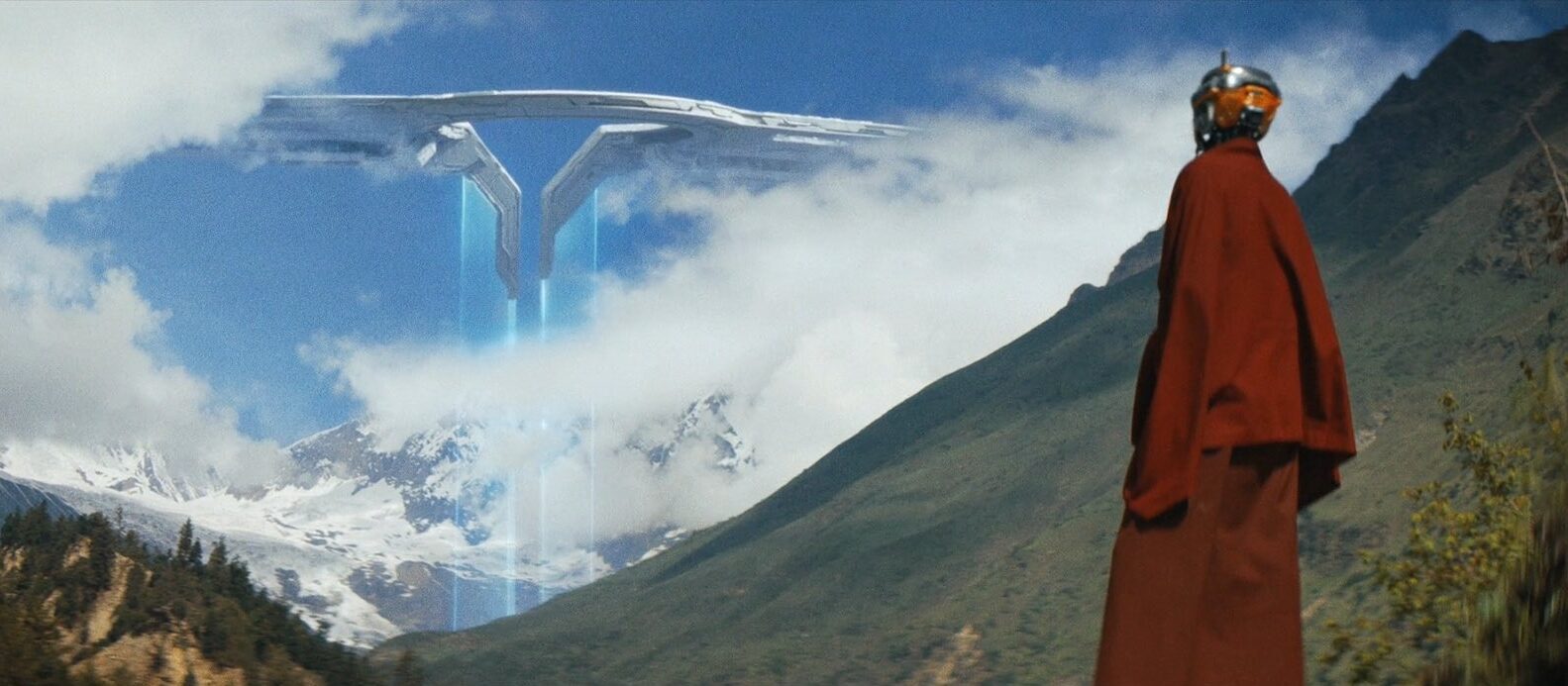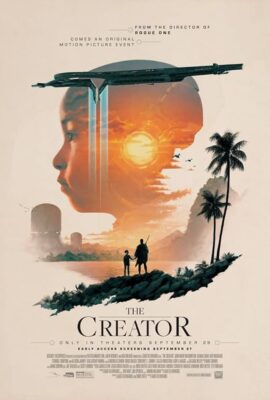

“What do you want, sweetie?”
“For robots to be free.”
“Oh. We don’t have that in the fridge. How about ice cream?”
It’s a real shame that Gareth Edwards has pinballed between self-penned sci-fi and big franchise films without ever working with a great screenplay. He’s so talented as a stylist and large-scale world-builder that I salivate at the thought of him working on an adaptation of The Hyperion Cantos or A Canticle for Leibowitz or Neuromancer. Instead, we’ve gotten ambitious, underwhelming originals like Monsters and tentpole features like Godzilla and Rogue One, which have lavish production values and built-in cultural iconography but are inherently confined by their lore and fan expectations. His latest, The Creator, is his first original project since his debut, and even though its budget is orders of magnitude larger, it exhibits the same strengths and weaknesses—namely that it builds out a tactile alternate future and carries itself with gravitas but falters in its storytelling and characterizations. It begins with an air of terrible majesty, as faux-vintage clips provide a potted history of AI humanoids’ integration into society and the accidental nuclear explosion that leveled a city and started a war between robots and humans. A cyborg John David Washington, working undercover in New Asia, sees his pregnant wife (Gemma Chan) and unborn child destroyed when she tries to flee during a hostile infiltration. An enormous military aircraft called NOMAD roves around the conglomerate country with a long-range laser targeting system, raining hellfire on suspected robot strongholds secretly hidden beneath pastoral farming villages. Buddhist robots meditate and peasants risk their lives to hide their workhorse companions. It’s a triumph of design and environmental storytelling that recalls indie gem Prospect if not the recent sci-fi epics of Denis Villeneuve (Blade Runner 2049, Dune: Part One and Part Two). Alas, rather than presenting a mythopoetic narrative or unfolding a fun yarn or crafting a complex character-based story, its stylistic panache is wasted on a clichéd, horribly flimsy Lone Wolf and Cub plot that sees the cyborg becoming a father figure to a techno-mystic AI “child” (Madeleine Yuna Voyles). It’s frustrating because the world Edwards establishes feels eminently capable of supporting something profound, something with real gravity, and the cast (Allison Janney, Ken Watanabe, Sturgill Simpson) are ready to commit, but amidst the breathless action we get only a few passing glances at the ripe thematic fruit waiting to be picked. In fact, it actively turns away from the ideas inherent in its premise in an attempt to conjure an on-the-nose allegory about bigotry. Edwards is off to direct the next Jurassic World sequel, but one wishes he was lined up to direct an adaptation of The Forever War or Lucifer’s Hammer. Or heck, let him go buck wild with Metal Gear Solid. I’d definitely make it a point to see any of those on the big screen.